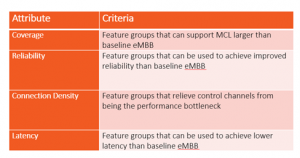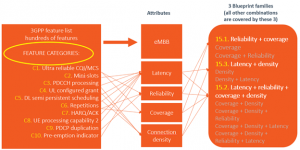By Asimakis Kokkos, Technical Specification Group Chair
The Alliance is proud to announce the completion of our first set of Uni5G™ technology blueprints based on 3GPP Release 15. These blueprints were developed to help industry verticals deploy their own 5G private networks that are designed specifically to meet their requirements for coverage, reliability, connection density, and latency.
We started this project over a year ago when we partnered with Beecham Research to interview industries operating around the world in a variety of sectors to assess their connectivity requirements. Based on their responses, we were able to identify four attributes that were required beyond baseline enhanced Mobile Broadband (eMBB).

Identify 3GPP Features
The second step was to identify the exact 3GPP features in Release 15 that industry verticals should implement to achieve coverage, reliability, connection density and low latency for their deployment scenario. 3GPP Release 15 has hundreds of features to choose from so this can be an overwhelming task for industry verticals that are not telecom experts. After extensive review, we narrowed down the options to 10 feature categories – with each category including between one and nine features with a total of 35 features.
Mapping Feature Categories to 3GPP Features
The next step was the mapping. We looked at each feature category and mapped the 3GPP features required to support each industry attribute.

What we found in our mapping is that the features that support coverage also improve reliability. And the features that support connection density also reduce latency. So, if an industry vertical wants to ensure that their network deployment will support their connection density requirements, they will also gain the advantage of lower latency.
The mapping resulted in three Uni5G blueprint families.
- Uni5G technology blueprint 15.1 which supports reliability and coverage requirements.
- Uni5G technology blueprint 15.2 which supports latency and density requirements.
- Uni5G technology blueprint 15.3 which supports all requirements.
Within each blueprint family, we also identified a “basic” version and an “extended” version. Each extended version implements a few additional features. This provides industry verticals with the option to purchase and deploy either a basic or high-end device that will work best for them. For example, a port operator can take the Uni5G technology blueprint to their vendor of choice and let them know which features their devices need to implement.
By combing through the hundreds of 3GPP features and identifying just the features needed for private network deployments by industry verticals, MFA is taking the guess work out of the process. With Uni5G technology blueprints, the Alliance is realizing its mission to provide a simplified path to 5G private networks.
Download the Uni5G technology blueprints here.

